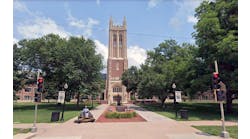In response to what appears to be a growing national concern, the Obama Administration announced new steps to force career and for-profit colleges to better prepare students for the work force or risk access to federal student aid, according to a press release from the Department of Education.
"The proposed regulations address growing concerns about unaffordable levels of loan debt for students enrolled in these programs by targeting the lowest-performing programs, while shining a light on best practices and giving all programs an opportunity to improve," Department of Education Secretary Arne Duncan said in the press release.
The regulations seem to be directed at for-profit colleges, which have a higher rate of student loan default than do public institutions. “Students at for-profit colleges represent only about 13 percent of the total higher education population, but about 31 percent of all student loans and nearly half of all loan defaults,” the release said. “In the most recent data, about 22 percent of student borrowers at for-profit colleges defaulted on their loans within three years, compared to 13 percent of borrowers at public colleges.”
In addition, for-profit colleges also leave students with a higher debt-rate than similarly situated students that attended public colleges. For example, the average debt for a student who graduated with an associates degree from a for-profit school was $23,590, whereas the average student at a community college did not borrow any money.
Moreover, a degree from a for-profit institution does not translate into more earnings. Analysis from the Department of Education showed that when looking at for-profit institutions, “the majority—72 percent—produced graduates who on average earned less than high school dropouts.”
The new regulations will impose certification requirements, accountability metrics, and public disclosures, the release said. “Those with the worst outcomes—high debt-to-earnings rates or high loan default rates—would lose eligibility to participate in federal student aid programs to protect students and taxpayers,” the release said.

